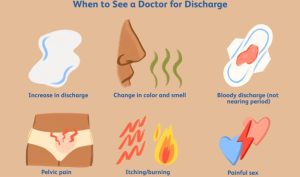As you prepare to bring new life into this world, you probably have a bazillion questions swirling through your head. Will labor be quick and smooth or long and torturous?
What exactly happens during delivery? How will I know what my newborn needs? While every woman’s journey is unique, knowledge is power. Understanding the various phases of labor, the nitty gritty of delivery, and tips for surviving those first few postpartum days can provide you with the confidence and calm needed to tackle this new chapter.
Though the path won’t always be easy, you’ve got this mama.

Are Those Real Contractions or Just Braxton Hicks? How to Tell the Difference
Those uncomfortable tightening sensations in your belly—are they real contractions signaling that baby’s on the way or just Braxton Hicks practice contractions?
Timing and intensity
Real contractions will become progressively more frequent and intense over time, while Braxton Hicks tend to be irregular and do not increase in strength. If contractions are coming every 5-10 minutes and are painful enough to make you stop what you’re doing, it’s probably the real deal.
Location
Braxton Hicks typically feels like your entire belly is tightening, while real contractions will feel more focused in your lower abdomen. They may start in your back and move to the front, wrapping around your midsection.
Walking around
When you walk around, real contractions will usually continue and may even get stronger. Braxton Hicks, on the other hand, will often go away or become less intense with movement or a change in position.
Water doesn’t help
If a warm bath or drinking water doesn’t relieve your contractions, that’s another sign they’re the real thing. Braxton Hicks is often eased by these measures.
When contractions become progressively longer, stronger, and closer together, it’s time to head to your delivery center—baby will be here soon! While the result will be the same, the journey there will be quite different than what you’ve experienced with Braxton Hicks. Your little one is on the way!
The Nitty Gritty of Labor and Delivery: What to Expect When You’re Expecting
The Onset of Labor
The first sign that your little one is ready to enter the world is the onset of labor. Contractions will start coming at regular intervals, signaling your cervix is dilating to 10 centimeters so the baby can pass through. Early labor can last 6-12 hours for a first pregnancy. Try walking, changing positions, or taking a warm bath to relieve discomfort during contractions.
Pushing Through
Once your cervix is fully dilated, it’s time to start pushing! The pushing stage can last 1-3 hours. Nurses will coach you on the best pushing techniques. Take a deep breath and push during each contraction using the strength of your abdomen and pelvic floor muscles. Rest in between contractions to conserve energy. You’re almost there!
The Moment You’ve Been Waiting For
With one final push, your baby will emerge and greet the world with their first cries. The umbilical cord will be clamped and cut, and your newborn will be placed on your chest for immediate skin-to-skin contact. Cherish this moment—you did it! Your body may be exhausted, but the arrival of your baby makes all the effort worthwhile.
Recovery and Beyond
You’ll remain in the hospital for a couple of days to recover and learn the basics of newborn care. Soreness, bleeding, and cramping are normal postpartum. Take it easy, keep hydrated, and lean on loved ones for help. Before you know it, you’ll be heading home with your sweet bundle of joy, ready to embark on this new chapter of life as a family!
Life With Baby: Postpartum Care Basics and Adjusting to Motherhood
The First Few Weeks
The first weeks after giving birth are a time of major adjustment. Your body is recovering, and you now have a tiny new human to care for around the clock. Make sure to get plenty of rest, stay hydrated, and eat healthy meals. Accept help from loved ones so you can recover and bond with your baby.
Taking Care of Yourself
Your body has been through a lot, so give yourself time to heal. Continue taking your prenatal vitamins and any pain medication as directed by your doctor. Do light exercises like walking or yoga when you feel up to it. Get out for fresh air and sunshine when you can. Make self-care a priority—take a shower, read a book, or call a friend. Your physical and emotional health is vital right now.
Learning Your Baby’s Cues
Spending lots of time with your newborn is the best way to become an expert in their cues. Pay attention to the different cries to learn if they’re hungry, tired, or need a diaper change. Learn the signs that they’re hungry or full during feedings. Notice their different facial expressions and body movements so you can interpret what they need. The more you observe, the better you’ll get at understanding and responding to your baby.
Finding a New Normal
The first weeks with a new baby are a period of adjustment for the whole family. Household chores and routines will likely go out the window for a while. Don’t worry about keeping a spotless home—focus on bonding with your baby and giving yourself time to rest. Lean on others for help with cooking meals, running errands, or watching the baby while you nap. Finding your new normal will take time. Be gentle with yourself and savor this special time.
So, there you have it, mama. Your journey into motherhood is going to take you on a wild ride, but you’ve got this! With the right support team by your side and a healthy mindset focused on the light at the end of the tunnel, you’ll make it through the delivery day and be holding your precious baby before you know it.
The aftermath won’t always be pretty – let’s be real, postpartum recovery is tough. But remember that what lies ahead is so worth it. Snuggle that sweet newborn, take help when it’s offered, and give yourself grace. You were built for this!
Now go rock that push and meet your baby – the rest will fall into place.







